Managerial Finance: Project Evaluation
VerifiedAdded on 2023/06/12
|8
|955
|404
AI Summary
This article discusses project evaluation in managerial finance, including feasibility analysis, NPV, IRR, and payback period. It includes a case study with calculations and comparisons between two projects.
Contribute Materials
Your contribution can guide someone’s learning journey. Share your
documents today.
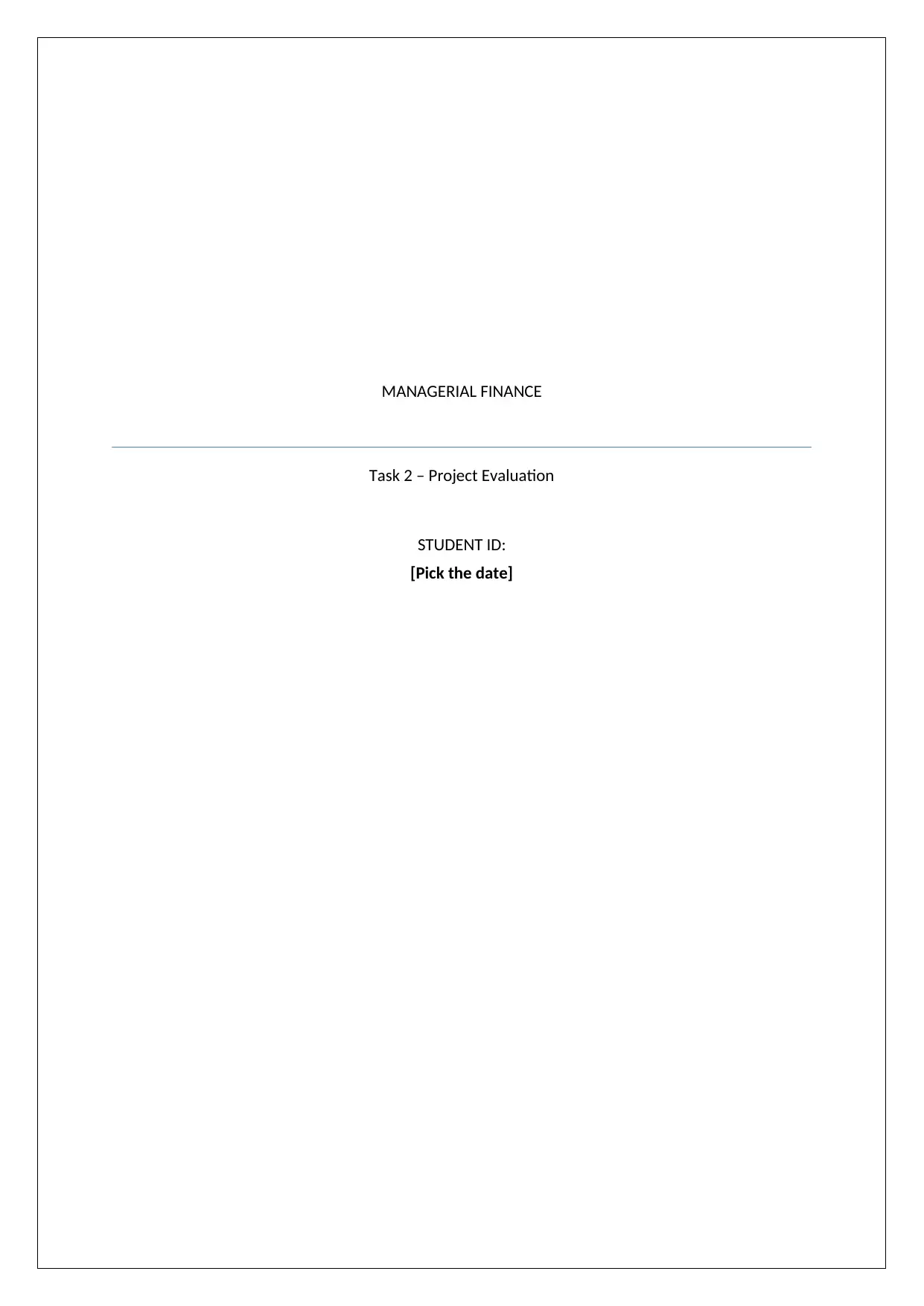
MANAGERIAL FINANCE
Task 2 – Project Evaluation
STUDENT ID:
[Pick the date]
Task 2 – Project Evaluation
STUDENT ID:
[Pick the date]
Secure Best Marks with AI Grader
Need help grading? Try our AI Grader for instant feedback on your assignments.
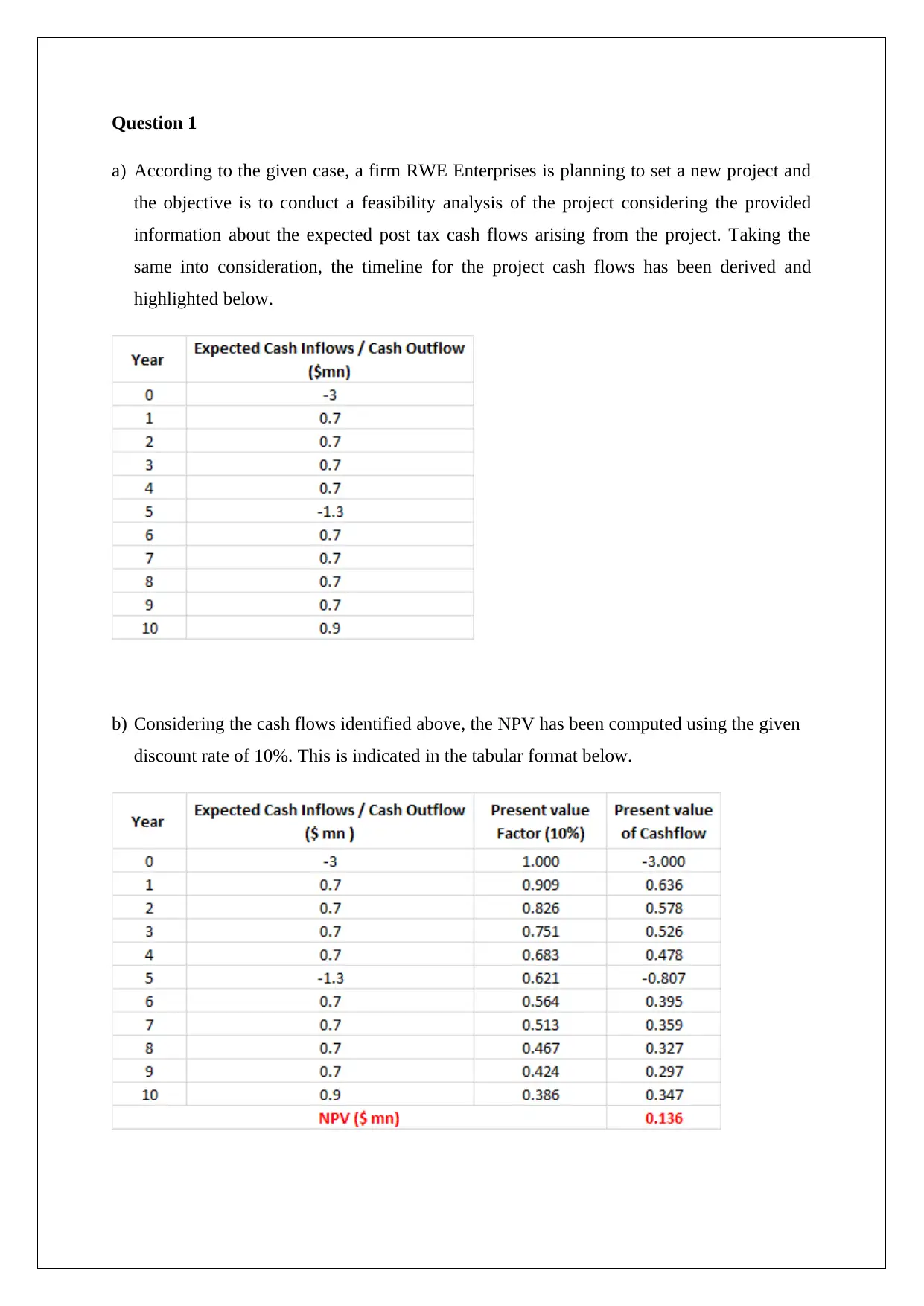
Question 1
a) According to the given case, a firm RWE Enterprises is planning to set a new project and
the objective is to conduct a feasibility analysis of the project considering the provided
information about the expected post tax cash flows arising from the project. Taking the
same into consideration, the timeline for the project cash flows has been derived and
highlighted below.
b) Considering the cash flows identified above, the NPV has been computed using the given
discount rate of 10%. This is indicated in the tabular format below.
a) According to the given case, a firm RWE Enterprises is planning to set a new project and
the objective is to conduct a feasibility analysis of the project considering the provided
information about the expected post tax cash flows arising from the project. Taking the
same into consideration, the timeline for the project cash flows has been derived and
highlighted below.
b) Considering the cash flows identified above, the NPV has been computed using the given
discount rate of 10%. This is indicated in the tabular format below.

The above calculations have resulted in NPV coming out to be greater than zero. A positive
NPV is indicative of the wealth creation on behalf of shareholders and also the project
acceptability.
c) Finding the IRR implies computing the discount rate which would result in NPV as zero.
The table below has been used for IRR computation which has come out as 11.04%
It is clear that IRR is greater than the provided discount rate and hence the project in financial
terms would be considered feasible (Ehrhardt and Brigham, 2016).
Profitability index is defined as the ratio of the present value of project cash flows arsing
during the useful project life and the investment done initially (Lasher, 2017). For the given
plant, the discounted value of all cash flows over the 10 year period stands at $3.14 million.
Also, at t=0, the investment would be $3 million.
Therefore, PI comes out as (3.14/3) or 1.05.
The given project would be considered as financially feasible owing to the PT being in excess
of 1.
d) The table below highlights the computation of cumulative cash flows which would be
useful for payback period computation since it refers to the time for the recovery at
investment at t=0.
NPV is indicative of the wealth creation on behalf of shareholders and also the project
acceptability.
c) Finding the IRR implies computing the discount rate which would result in NPV as zero.
The table below has been used for IRR computation which has come out as 11.04%
It is clear that IRR is greater than the provided discount rate and hence the project in financial
terms would be considered feasible (Ehrhardt and Brigham, 2016).
Profitability index is defined as the ratio of the present value of project cash flows arsing
during the useful project life and the investment done initially (Lasher, 2017). For the given
plant, the discounted value of all cash flows over the 10 year period stands at $3.14 million.
Also, at t=0, the investment would be $3 million.
Therefore, PI comes out as (3.14/3) or 1.05.
The given project would be considered as financially feasible owing to the PT being in excess
of 1.
d) The table below highlights the computation of cumulative cash flows which would be
useful for payback period computation since it refers to the time for the recovery at
investment at t=0.
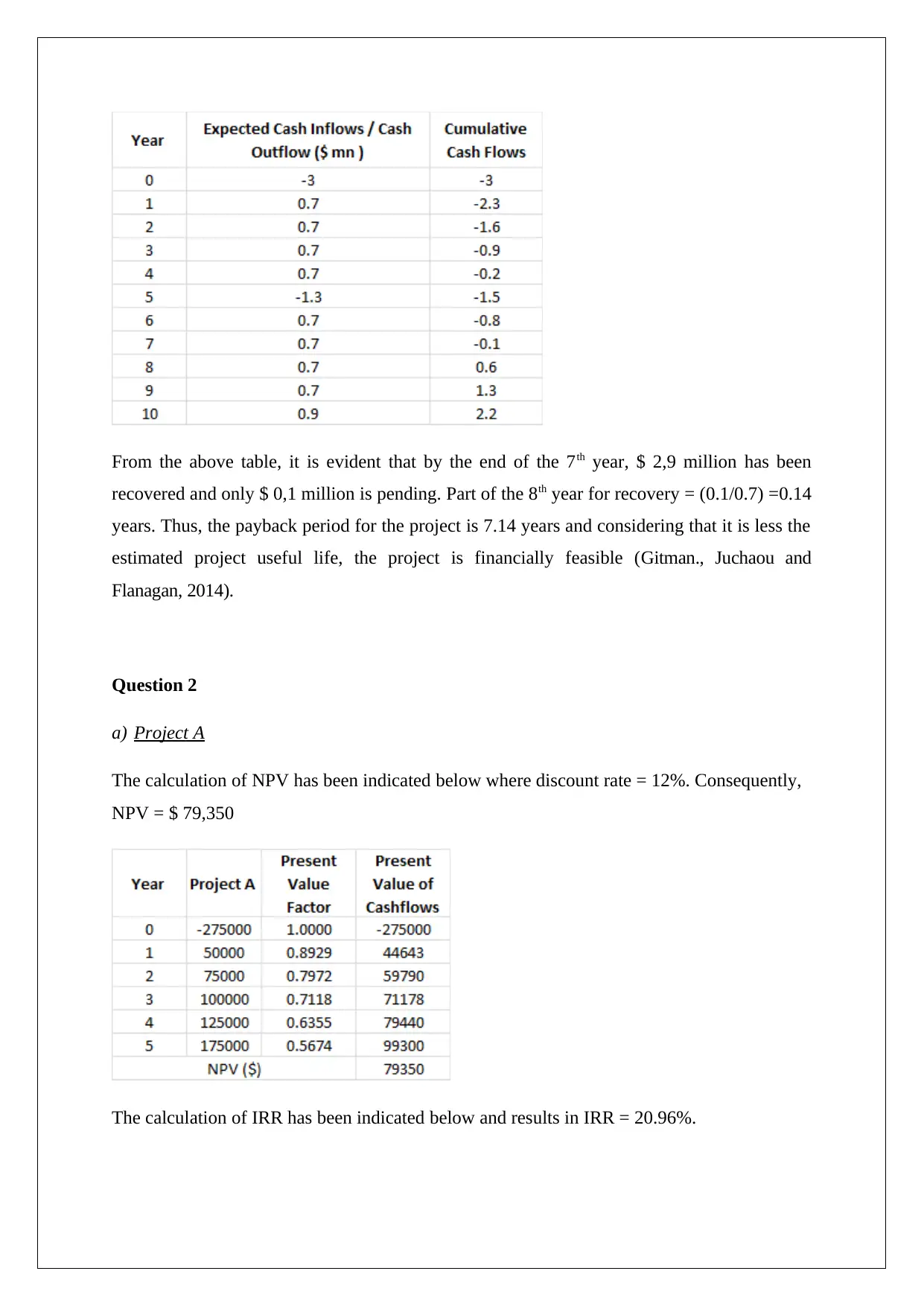
From the above table, it is evident that by the end of the 7th year, $ 2,9 million has been
recovered and only $ 0,1 million is pending. Part of the 8th year for recovery = (0.1/0.7) =0.14
years. Thus, the payback period for the project is 7.14 years and considering that it is less the
estimated project useful life, the project is financially feasible (Gitman., Juchaou and
Flanagan, 2014).
Question 2
a) Project A
The calculation of NPV has been indicated below where discount rate = 12%. Consequently,
NPV = $ 79,350
The calculation of IRR has been indicated below and results in IRR = 20.96%.
recovered and only $ 0,1 million is pending. Part of the 8th year for recovery = (0.1/0.7) =0.14
years. Thus, the payback period for the project is 7.14 years and considering that it is less the
estimated project useful life, the project is financially feasible (Gitman., Juchaou and
Flanagan, 2014).
Question 2
a) Project A
The calculation of NPV has been indicated below where discount rate = 12%. Consequently,
NPV = $ 79,350
The calculation of IRR has been indicated below and results in IRR = 20.96%.
Secure Best Marks with AI Grader
Need help grading? Try our AI Grader for instant feedback on your assignments.
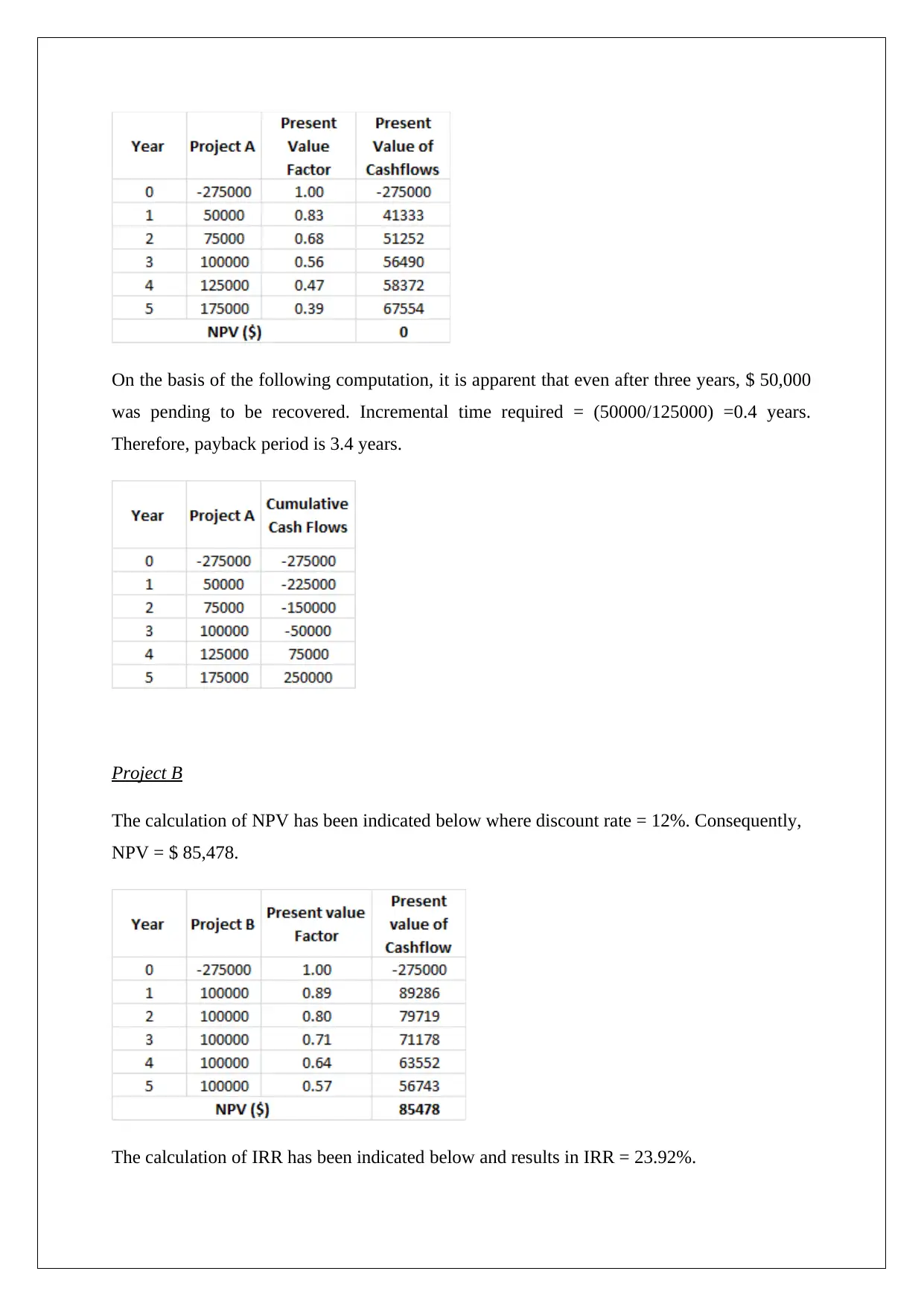
On the basis of the following computation, it is apparent that even after three years, $ 50,000
was pending to be recovered. Incremental time required = (50000/125000) =0.4 years.
Therefore, payback period is 3.4 years.
Project B
The calculation of NPV has been indicated below where discount rate = 12%. Consequently,
NPV = $ 85,478.
The calculation of IRR has been indicated below and results in IRR = 23.92%.
was pending to be recovered. Incremental time required = (50000/125000) =0.4 years.
Therefore, payback period is 3.4 years.
Project B
The calculation of NPV has been indicated below where discount rate = 12%. Consequently,
NPV = $ 85,478.
The calculation of IRR has been indicated below and results in IRR = 23.92%.
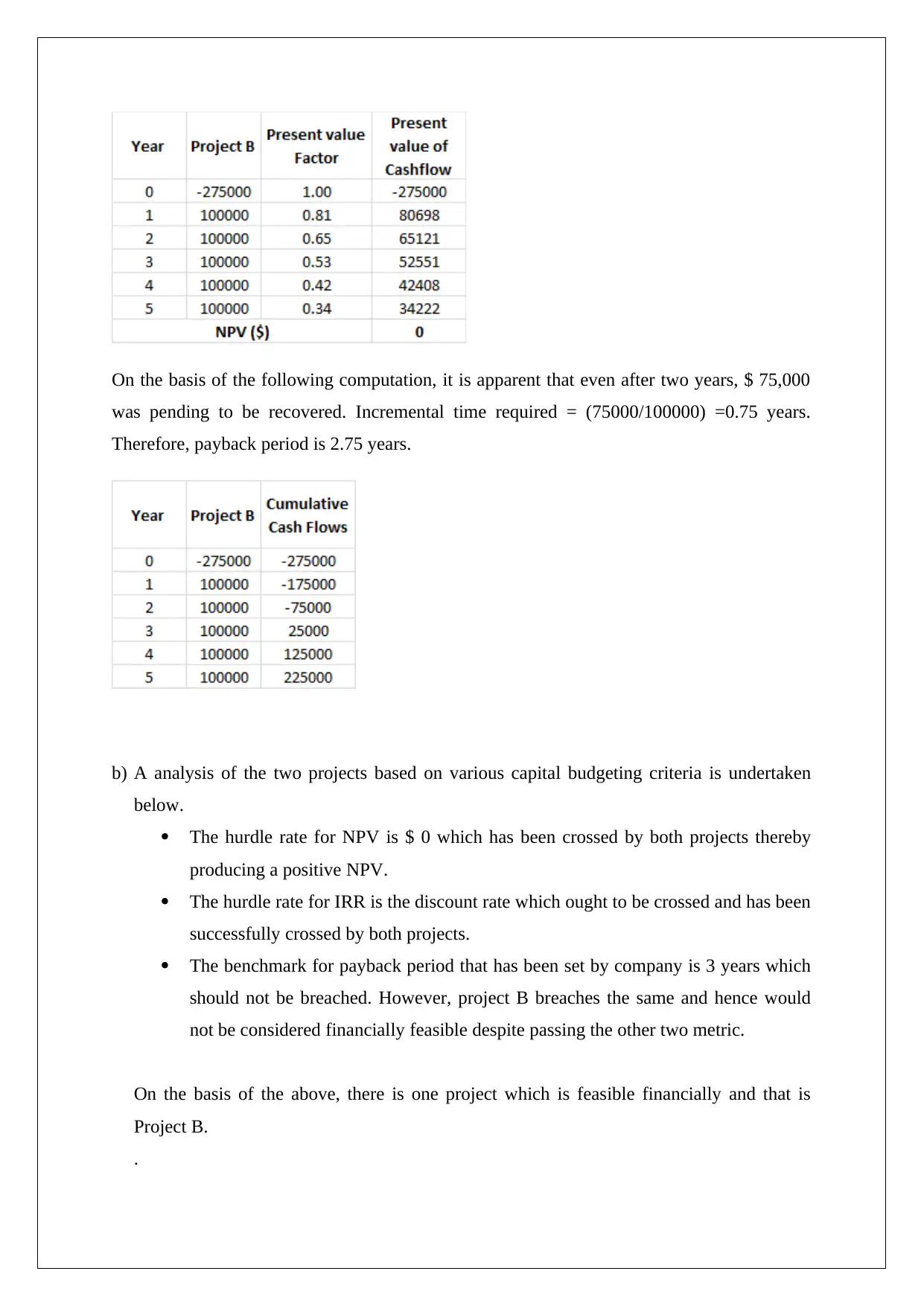
On the basis of the following computation, it is apparent that even after two years, $ 75,000
was pending to be recovered. Incremental time required = (75000/100000) =0.75 years.
Therefore, payback period is 2.75 years.
b) A analysis of the two projects based on various capital budgeting criteria is undertaken
below.
The hurdle rate for NPV is $ 0 which has been crossed by both projects thereby
producing a positive NPV.
The hurdle rate for IRR is the discount rate which ought to be crossed and has been
successfully crossed by both projects.
The benchmark for payback period that has been set by company is 3 years which
should not be breached. However, project B breaches the same and hence would
not be considered financially feasible despite passing the other two metric.
On the basis of the above, there is one project which is feasible financially and that is
Project B.
.
was pending to be recovered. Incremental time required = (75000/100000) =0.75 years.
Therefore, payback period is 2.75 years.
b) A analysis of the two projects based on various capital budgeting criteria is undertaken
below.
The hurdle rate for NPV is $ 0 which has been crossed by both projects thereby
producing a positive NPV.
The hurdle rate for IRR is the discount rate which ought to be crossed and has been
successfully crossed by both projects.
The benchmark for payback period that has been set by company is 3 years which
should not be breached. However, project B breaches the same and hence would
not be considered financially feasible despite passing the other two metric.
On the basis of the above, there is one project which is feasible financially and that is
Project B.
.
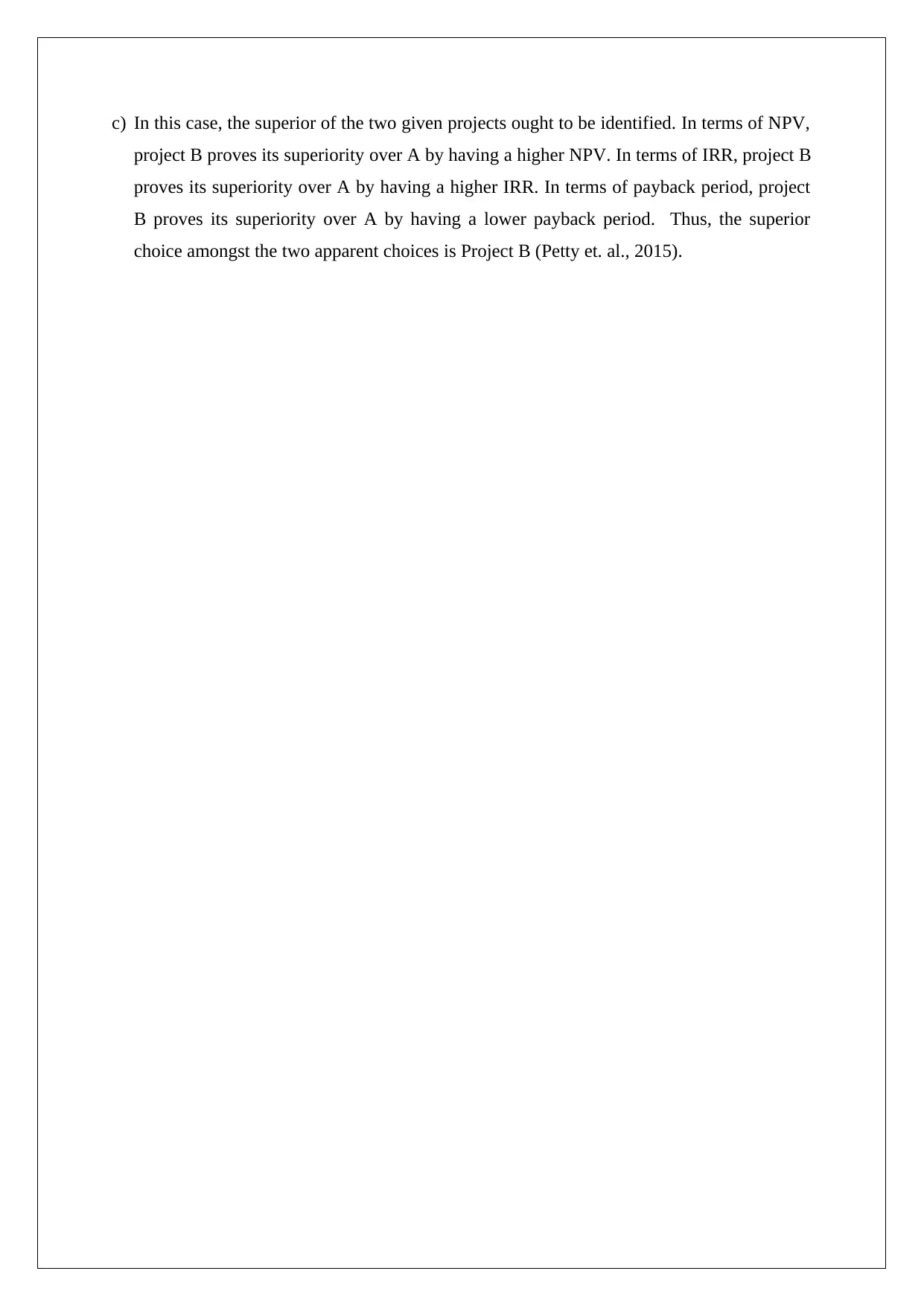
c) In this case, the superior of the two given projects ought to be identified. In terms of NPV,
project B proves its superiority over A by having a higher NPV. In terms of IRR, project B
proves its superiority over A by having a higher IRR. In terms of payback period, project
B proves its superiority over A by having a lower payback period. Thus, the superior
choice amongst the two apparent choices is Project B (Petty et. al., 2015).
project B proves its superiority over A by having a higher NPV. In terms of IRR, project B
proves its superiority over A by having a higher IRR. In terms of payback period, project
B proves its superiority over A by having a lower payback period. Thus, the superior
choice amongst the two apparent choices is Project B (Petty et. al., 2015).
Paraphrase This Document
Need a fresh take? Get an instant paraphrase of this document with our AI Paraphraser
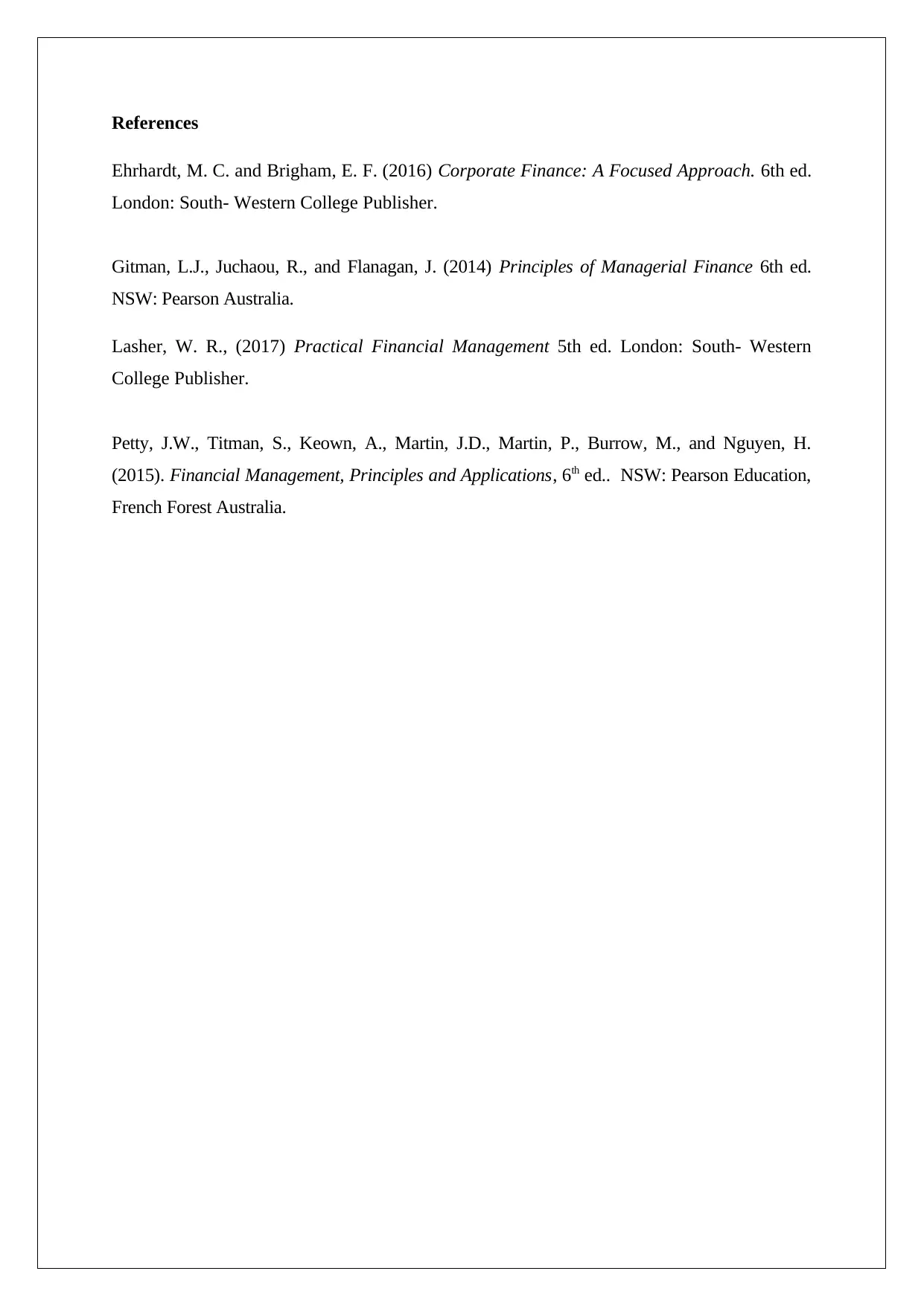
References
Ehrhardt, M. C. and Brigham, E. F. (2016) Corporate Finance: A Focused Approach. 6th ed.
London: South- Western College Publisher.
Gitman, L.J., Juchaou, R., and Flanagan, J. (2014) Principles of Managerial Finance 6th ed.
NSW: Pearson Australia.
Lasher, W. R., (2017) Practical Financial Management 5th ed. London: South- Western
College Publisher.
Petty, J.W., Titman, S., Keown, A., Martin, J.D., Martin, P., Burrow, M., and Nguyen, H.
(2015). Financial Management, Principles and Applications, 6th ed.. NSW: Pearson Education,
French Forest Australia.
Ehrhardt, M. C. and Brigham, E. F. (2016) Corporate Finance: A Focused Approach. 6th ed.
London: South- Western College Publisher.
Gitman, L.J., Juchaou, R., and Flanagan, J. (2014) Principles of Managerial Finance 6th ed.
NSW: Pearson Australia.
Lasher, W. R., (2017) Practical Financial Management 5th ed. London: South- Western
College Publisher.
Petty, J.W., Titman, S., Keown, A., Martin, J.D., Martin, P., Burrow, M., and Nguyen, H.
(2015). Financial Management, Principles and Applications, 6th ed.. NSW: Pearson Education,
French Forest Australia.
1 out of 8
Related Documents
Your All-in-One AI-Powered Toolkit for Academic Success.
+13062052269
info@desklib.com
Available 24*7 on WhatsApp / Email
![[object Object]](/_next/static/media/star-bottom.7253800d.svg)
Unlock your academic potential
© 2024 | Zucol Services PVT LTD | All rights reserved.





